
Winners have been chosen and contest is now over.
The last two decades have seen cellular networks, from older 2G to newer 4G LTE, become the mobile wireless broadband standard. While the market has historically leaned towards greater network capacity and higher bandwidth, as the IoT market has matured, cellular providers have shifted their focus to offer connectivity to diverse IoT applications where the emphasis is on battery life and large numbers of connected devices. Connecting millions of sensors to the existing LTE network is impractical, as LTE was not designed to support huge numbers of simultaneous connections. As such, the cellular industry has responded to these challenges by laying out their vision of cellular IoT. This learning module covers the basic concepts, protocols, and operation of cellular IoT networks.
2. Objectives
Upon completion of this module, you will be able to:
 Comprehend the scope of cellular IoT
Comprehend the scope of cellular IoT
 Understand the fundamentals of this technology
Understand the fundamentals of this technology
 Describe applications of NB-IoT
Describe applications of NB-IoT
 Explain 5G and the future of cellular IoT
Explain 5G and the future of cellular IoT
Connecting people is passé; connecting "things" is in. Smartphones are ubiquitous, enabling our voices and data to be transmitted over a secure and reliable network. Substantial investments have been sunk into spectrum network deployments and spectrum allocations to ensure better coverage for the subscriber population. These networks can be used to connect things. Good cellular solutions must satisfy diverse connectivity needs. Traditional cellular choices like 2G, 3G, or even 4G modems are power-hungry and not compatible with applications where only a minuscule quantity of data occasionally gets transmitted. Cellular IoT today satisfies low power, long-range applications (e.g., meters, street lights, asset trackers, parking spaces, agriculture sensors, and healthcare equipment). It tweaks existing tried and tested technology and engineers it to satisfy the needs of low power devices. The scope of this learning module is to introduce you to the basic concepts of cellular IoT and how it works.
- 4.1 What is Cellular IoT?
It's a technique used to connect physical things (e.g., sensors) to the internet. Common smartphone components are used to achieve this objective. Instead of creating a new, private network to house your IoT devices, cellular IoT can piggyback on the existing smartphone mobile network. This method offers a viable alternative to low power, wide area networks. Cellular IoT has gained traction in the industry for three primary reasons:
 Availability: Mobile networks are ubiquitous, feeding information to 90 percent of the earth's connected population. In contrast, Wi-Fi and other technologies lack this gargantuan scale, with users forced to actively hunt for a local network and then connect to it.
Availability: Mobile networks are ubiquitous, feeding information to 90 percent of the earth's connected population. In contrast, Wi-Fi and other technologies lack this gargantuan scale, with users forced to actively hunt for a local network and then connect to it.
 Cost: RF providers, carriers, and wireless infrastructure companies have invested enormous sums of money in cellular networks to facilitate a secure and reliable service to a large number of customers. Cellular IoT can simply leverage this mature technological resource and existing infrastructure to connect millions of IoT devices with minimal additional investment.
Cost: RF providers, carriers, and wireless infrastructure companies have invested enormous sums of money in cellular networks to facilitate a secure and reliable service to a large number of customers. Cellular IoT can simply leverage this mature technological resource and existing infrastructure to connect millions of IoT devices with minimal additional investment.
 Range: Cellular IoT satisfies the needs of low-power devices with its supplementary range of mobile networks. Bluetooth and Wi-Fi are excellent for high bandwidth but lack the necessary reach for quality long-distance communications. Cellular IoT enables any smartphone to connect to any cell tower a few miles away; IoT devices enjoy an identical advantage.
Range: Cellular IoT satisfies the needs of low-power devices with its supplementary range of mobile networks. Bluetooth and Wi-Fi are excellent for high bandwidth but lack the necessary reach for quality long-distance communications. Cellular IoT enables any smartphone to connect to any cell tower a few miles away; IoT devices enjoy an identical advantage.
The motive behind the Cellular IoT Initiative is to accelerate the commercial availability of low power, wide area solutions within the licensed spectrum.
In Figure 1, a sensor interfaces with an IoT device (also called User Equipment (UE)) and connects with Wi-Fi (wireless LAN), PAN, wired LAN, or a cellular network. The network can be any existing infrastructure like GSM, CDMA, or LTE. The IoT device connects with the device gateway on the network side. This, in turn, is interfaced with the internet via a WAN connection. Two IoT devices mutually communicate in such a manner.
- 4.2 The Rationale Behind Low Power Wide Area Networks
In its quest to support further growth and increased development of the Internet of Things (IoT), the mobile industry has collaborated with 3GPP (3rd Generation Partnership Project) to standardize a new batch of GSM technologies. The resultant LPWA networks are compatible with devices characterized by low power consumption, security, long-range, and low cost. LPWA networks perform a vital role when it comes to stitching together the various devices constituting the IoT. It is anticipated that LPWA technologies will cater to a bouquet of vertical industries, supporting a diverse range of deployment scenarios and applications beyond the capability of existing mobile technologies.
- 4.3 Cellular IoT Requirements
The requirements of Cellular IoT are similar to LPWAN, such as:
- 5.1 The Evolution of the 3GPP Standard for IoT Support
The two global standards, UMTS (Universal Mobile Telecommunications Service) and GSM (Global System for Mobile Communication), are a combination of comparatively smaller continental and country standards like Europe's ETSI (European Telecommunication Standards Institute), Japan's TTC and ARIB, Korea's TTA, USA's ATIS, and China's CCSA. The technologies were combined to make a complex but manageable system. This system is managed by 3GPP, which itself falls under the ambit of governance by ITU-R (Inter Telecommunication Union for Radio communication sector). 3GPP has evolved on both the device and network sides to satisfy the new connectivity needs of the nascent IoT segment, potential IoT applications, and market situations. As a consequence, the 3GPP has standardized several technologies. Specifically, the 3GPP has worked on three different IoT standardized solutions:
 LTE-M, built on LTE evolutions, Cat-0 and also Cat-1
LTE-M, built on LTE evolutions, Cat-0 and also Cat-1
 EC-GSM, a GSM evolution based narrowband solution
EC-GSM, a GSM evolution based narrowband solution
 NB-LTE, a narrowband cellular IoT solution
NB-LTE, a narrowband cellular IoT solution
Both EC-GSM and NB-LTE were later combined to standardize as a single NB-IoT technology. All these standards operate seamlessly on existing LTE or GSM networks. They support a wide array of IoT applications that are at present solely available via non-cellular LPWAN options.
- 5.2 LTE Evolution Track
According to the 3GPP, it was motivated to introduce LTE for several reasons, including:
 To ensure the competitiveness of the 3G system for the future
To ensure the competitiveness of the 3G system for the future
 To serve users desiring higher data rates and quality of service
To serve users desiring higher data rates and quality of service
 To develop a packet switch optimized system
To develop a packet switch optimized system
 To satisfy the continued demand for cost reduction (CAPEX and OPEX)
To satisfy the continued demand for cost reduction (CAPEX and OPEX)
 To avoid unnecessary fragmentation of technologies for paired and unpaired band operation
To avoid unnecessary fragmentation of technologies for paired and unpaired band operation
The 4G device standardization was the result of several factors: smartphone proliferation, and by extension, the huge number of apps being downloaded. 4G can now support uplink peak rates of 50Mbps and downlink peak rates of 150 Mbps.
The 3G devices traded their speed for a reduced cost and can support uplink and downlink peak rates of 5Mbps and 10Mbps, respectively. For a majority of M2M applications, only very small quantities of data are transferred.
As IoT infrastructure began to coalesce, the administrators of 3GPP became aware of multiple applications where sensors are stationary and only need to infrequently send data (and not necessarily in time-sensitive fashion). The newer cellular IoT protocols respond to such requirements. Cat-0, Cat-M, and NB-IoT sidestep network overload on current LTE technology infrastructure and support large numbers of simultaneously connected devices.
Key updates to satisfy IoT-specific requirements included device power-saving mode (PSM) and enhanced discontinuous reception (eDRX). As per predictions made by experts, Cat-1 will replace 3G when it sunsets and Cat-0/Cat-M is taking the place occupied by 2G in the future. It is important to comprehend that with the evolution of LTE, these new categories do not necessarily replace the older versions, but complement them through their support of new connected devices.
- 5.3 The LTE Device Evolution
Like LTE Network evolution, the LTE device evolution has been in two directions:  the first is with higher throughput centered on Carrier Aggregation and (ii) the other direction is with lower throughput accompanied by low power consumption. The latter direction has come about as a result of IoT applications and the prevalence of Machine Type Communication Devices. The Cat 1 user equipment (UE) can be regarded as a pioneer reference Machine Type device which can be further optimized to Cat 0, Cat-M or Cat-NB devices. A brief comparison of such devices is in Table 1.
the first is with higher throughput centered on Carrier Aggregation and (ii) the other direction is with lower throughput accompanied by low power consumption. The latter direction has come about as a result of IoT applications and the prevalence of Machine Type Communication Devices. The Cat 1 user equipment (UE) can be regarded as a pioneer reference Machine Type device which can be further optimized to Cat 0, Cat-M or Cat-NB devices. A brief comparison of such devices is in Table 1.
| LTE Rel-8 Cat-1 | LTE Rel-12 Cat-0 | LTE Rel-13 Cat-M1 | NB-IoT Rel-13 | |
|---|---|---|---|---|
| DL Peak rate | 10 Mbps | 1 Mbps | 1 Mbps | ~0.2 Mbps |
| UL Peak rate | 5 Mbps | 1 Mbps | 1 Mbps | ~0.2 Mbps |
| Duplex mode | Full | Half or Full | Half or Full | Half |
| UE bandwidth | 20 MHz | 20 MHz | 1.4 MHz | 0.18 MHz |
| Maximum transmit power | 23 dBm | 23 dBm | 20 or 23 dBm | 23 dBm |
| Relative modem complexity | 100% | 50% | 20-25% | 10% |
Note: peak data rates refer to full-duplex operation for Cat-0 and Cat-M1
Table 1: UE Category for IoT Applications (Source: ericsson.com) Coverage Map
- 5.4 LTE-M Evolution for Cellular IoT
LTE supports Time Division Duplex and Frequency Division Duplex. These Modes use a common subframe structure of 1 ms. Such a short subframe length allows minimum latency, thus ensuring a better user experience. 3GPP standardization has continued for LTE-M and NB-IoT for enhanced coverage, battery life, and lower complexity compared to existing LTE devices.
- 5.5 3GPP for LTE-M objectives
The specification of a new M2M operation device category in all concerned LTE duplex modes was elaborated on in later iterations. The low complexity device category supports:
 Reduction of 1.4 MHz device bandwidth both uplink and downlink
Reduction of 1.4 MHz device bandwidth both uplink and downlink
 Reduced 20 dBm maximum transmit power
Reduced 20 dBm maximum transmit power
 Improvement in LTE coverage corresponding to 15 dB for FDD
Improvement in LTE coverage corresponding to 15 dB for FDD
 Enhanced LTE DRX cycle to permit longer inactive periods and consequently optimize battery life
Enhanced LTE DRX cycle to permit longer inactive periods and consequently optimize battery life
Machine-to-Machine (M2M) deployments require long-range communication capability. The data collated by remote devices are sent automatically to the machine, and control of the remote devices rests on the operator. The logical choice for a Wide-Area-Network (WAN) for M2M applications is cellular data services.
The narrowband NB-IoT enjoys the following improvements over LTE-M:
 Reduced device bandwidth of 200 kHz both uplink and downlink
Reduced device bandwidth of 200 kHz both uplink and downlink
 Reduced throughput centered on a single physical resource block or PRB operation
Reduced throughput centered on a single physical resource block or PRB operation
 Improvements in LTE coverage corresponding to 20 dB (Five dB better than LTE-M)
Improvements in LTE coverage corresponding to 20 dB (Five dB better than LTE-M)
Cat-M1 goes by two other names: LTE-M and eMTC (enhanced machine-type communication). While M initially stood for "machines," the Cat-M1 devices are not limited to M2M communication protocols. Cat-M1 builds on power reduction, lower complexity, and lower speeds previously achieved in Cat-1. The device bandwidth, to be specific, was capped at 1.4 MHz for both downlink and uplink (as opposed to 20 MHz for Cat-1 devices), and the max transmit power was reduced to 20 dBm.
Figure 2: Power Saving Mode and eDRX. Source: LinkLabs.com
Figure 2 (left) explains the Power Saving Mode (PSM) introduced to extend device battery life. A PSM supporting device will request its network for a specific active timer value at the time of tracking area update (TAU) procedure. This active timer controls the length of time the device continues to be reachable for the mobile terminated transaction when the transition occurs from the connected mode to the idle mode. The device switches on the active timer when it transits from connected mode to idle mode. With the expiration of the active timer, the device switches to PSM and cannot be reached as it does not check for paging (explained in the eDRX section below), but continues to be registered with the network. It continues in PSM until a device originated transaction compels it to begin on any network or related process.
The extended discontinuous reception cycle (eDRX) shown in Figure 2 (right) has a few similarities, but also a few differences compared with PSM. The blue bar still represents the RX/TX connected mode, while the smaller blue bars now represent the paging window. Within each eDRX interval, there exists a paging window, which normally consists of three paging cycles. During each paging cycle, the network can contact the device if there is queued data for that specific device. The paging windows & paging cycles are configurable.
eDRX is made possible by the standardization of improved battery life. eDRX is used when downlink traffic is delay intolerant (meaning a long TAU cycle is not possible) or in extreme coverage conditions. Figure 2 shows two important features in LTE-M for longer battery life. Taking into account the leakage of current and battery self-discharge, the life cycle of the battery can be extended to 10 years.
Note that both PSM & eDRX are available on LTE-M1 & nB-IoT, however the configurable parameters (e.g. TAU, paging window, eDRX interval) may differ. Also, note that not all carriers support all of the allowed configurable parameter values.
Typical LTE — M applications include:
 Retail and POS (Point of Sale)
Retail and POS (Point of Sale)
- 5.6 NB (Narrow Band) IoT
NB-IoT is a new 3GPP radio-access narrowband technology standard, it is designed to operate in or around LTE bands and coexist with other LTE devices. This technology is similar to Cat-M, but utilizes DSSS modulation compared to LTE radios and it is partially backwards compatible with existing 3GPP devices. The technology is designed to achieve excellent co-existence performance with legacy GSM, GPRS, and LTE technologies. The technology needs 200 kHz minimum system bandwidth to uplink and downlink. The choice of minimum system bandwidth enables multiple deployment options, like a GSM operator substituting one GSM carrier (200 kHz) with NB-IoT. The throughput for NB-IoT is 60 kbps uplink and 30 kbps downlink. It is suitable for static, low-power applications requiring low throughput. The operator can deploy NB-IoT inside an LTE carrier by allocating one Physical Resource Block (PRB) of 180 kHz to it. Such a 200 kHz minimum bandwidth requirement facilitates three possible NB-IoT operational modes. These are mentioned below and illustrated in Figure 3:
 In-band Operation utilizing one physical resource block (PRB) of an LTE carrier
In-band Operation utilizing one physical resource block (PRB) of an LTE carrier
 Guard Band Operation through the use of resource blocks within the LTE carrier Guard Band
Guard Band Operation through the use of resource blocks within the LTE carrier Guard Band
 A standalone operation through the use of GSM 200 kHz carrier
A standalone operation through the use of GSM 200 kHz carrier
Figure 3: NB-IoT Modes of Operations
NB-IoT fully reuses conventional LTE design, including numerologies, channel coding, downlink OFDMA, rate matching, uplink SC-FDMA, channel coding, and interleaving. This significantly reduces the time needed to develop complete design specifications. It is anticipated that the time needed to develop NB-IoT products will be significantly reduced for the existing LTE OEMs and ODMs.
The technology uses identical Network architecture to a conventional LTE Network, along with some optimization needed to support IoT massive user needs. Figure 4 illustrates the NB-IoT basic architecture. It resembles an LTE network and consists of two parts: Access Network and EPS (Evolved Packet System) Core Network. No change is observed in the access network architecture, but changes do occur inside the core network. Both the user plane and the control plane experience change, along with a few other optimizations, to support IoT applications. A new node SCEF (Service Capability Exposure Function) is designed specifically for machine type data. It delivers non-IP data over the control plane and offers an interface for network services like authentication and authorization, discovery, and access network capabilities.
Typical NB-IoT applications include:
There are some important differences between LTE-M and NB-IoT, which are described in Table 2:
| LTE-M | NB-IoT |
|---|---|
| Ideal for mobile applications and applications with more data per connection event | Ideal for static installations with little data per connection event |
| Throughput allows for efficient over-the-air updates | Control plane communication reduces overhead |
| Mobility allows a connection to be maintained up to ground vehicle speeds | Narrowband PHY gives improved range and penetration |
| Direction connection to the preferred cloud vendor with end-to-end encryption is possible | Non-IP communication allows use of highly optimized protocol |
| Roaming between countries/networks | Not always possible to connect directly to your cloud service, but needs to pass through a cellular core network server, making it a part in the data transfer |
Table 2: Comparison of LTE-M and NB-IoT (Source: Nordic Semiconductors)
- 5.7 Development Kits
As discussed in the preceding paragraphs, 3GPP standards like LTE-M and NB- IoT encompass this technology through projects or designs. Several development kits, SoC modules, reference design kits, and software are available. In this context, the Nordic Semiconductor architecture module is shown below of such a development kit.
The Nordic Semiconductor nRF91 Series is a family of low power cellular devices for the Internet of Things. It integrates LTE-M, NB-IoT, GPS, an RF front end (RFFE), and power management into a small package. The nRF91 comes with many qualifications required to use cellular technology. Since it integrates an application processor, multimode LTE-M/ NB-IoT modem, power management, RF front end (RFFE), and GPS within a neat 10x16x1 mm package, the series makes a compact solution for cellular IoT. The nRF9160 SiP has a built-in GPS to target asset tracking applications. It combines location data gleaned from the cellular network with GPS satellite trilateration to permit remote monitoring of device position. The product makes single-chip solutions viable.
The nRF9160 SiP is equipped with an Arm Cortex-M33 CPU complete with RAM and on-chip flash solely for application use. A range of digital and analog peripherals support the application processor and facilitate advanced single-chip cellular IoT products. Integrated security and cryptography enable nRF9160 to satisfy the latest authentication and Internet Security qualifications. The tasks list includes faultless execution capability on the concerned application processor. Security is enhanced by securing the peripherals and critical processes in the application. The on-chip modem enjoys an independent security island.
The LTE Modem supports eDRX and PSM and enhances LTE-M and NB-IoT coverage. The RF front end offers a 50 Ω single pin antenna interface with 23 dBm output power and supports LTE bands (700 MHz to 2.2 GHz). The modem firmware includes LTE stack layers L1-L3, IPv4/IPv6, TCP/UDP, and TLS/DTLS. The application processor contains application layer protocols like CoAP, LWM2M, or MQTT and communicates with the LTE modem through a BSD secure socket API. The nRF9160 LTE modem is compatible with both SIM and eSIM, and plug-in or soldered. The device provides power and automatically manages all communication.
Nordic Semiconductor designs both hardware and software. The device has built from the ground up to be low-power and the software is also optimized for low-power. The nRF Connect SDK is the software development kit, integrating the Zephyr RTOS and Application layer protocols like CoAP, MQTT and LWM2M, and the application examples cover a range of use cases. The nRF9160 also includes secure boot software and secure firmware over-the-air (FOTA) updates for application and/or modem firmware. The nRF9160 DK can be connected to a company cloud solution, nRF Connect for Cloud, to display the sensor data. nRF Connect for Cloud is based on the AWS platform. However, one can also connect the nRF9160 to other cloud providers/solutions. The AT command interface provided by the LTE Link Monitor tool enables you to test cellular links and extract network information. The latest internet security and authentication requirements are met by integrated cryptographic and security features of the nRF9160. The LTE modem runs Nordic supplied encrypted firmware images. For more information about nRF9160 please check out the nordic page.
- 5.8 EC-GSM IoT
Extended Coverage GSM (EC-GSM) is similar to NB-IoT since both use 180 kHz, and only existing GSM networks are taken advantage of. A simple firmware upgrade will enable the 2G chips to be reused. Such an upgrade makes the PSM and eDRX power-efficient. The EC-GSM's biggest advantage-and also its disadvantage-are its ties to the present GSM radio interface.
GSM technology towers over cellular protocols. Big carriers searching for cheap deployment options may opt for EC-GSM. However, in many parts of the world, LTE based networks dominate GSM networks. If 5G is the future, an LTE protocol with increased compatibility may be more forward-facing than EC-GSM.
| LTE-M | NB-IoT | EC-GSM-IoT | |
|---|---|---|---|
| Deployment | In-band LTE | In-band & Guard -band LTE, standalone | In-band GSM |
| Coverage | 155.7 dB | 164 dB standalone, FFS others | 164 dB, with 33dBm power class 154 dB, with 23dBm power class |
| Downlink | OFDMA, 15kHz tone spacing, Turbo code, 16 QAM, 1 Rx | OFDMA, 15kHz tone spacing, 1 Rx | TDMA/FDMA, GMSK and 8PSK (optional), 1 Rx |
| Uplink | SC-FDMA, 15kHz tone spacing, Turbo code, 16 QAM, 1 Rx | Single-tone, 15kHz and 3.75kHz, spacing SC-FDMA, 15kHz tone spacing, Turbo Code | TDMA/FDMA, GMSK and 8PSK (optional) |
| Bandwidth | 1.08 MHz | 180 kHz | 200 kHz per channel. Typical system bandwidth of 2.4MHz (smaller bandwidth down to 600 kHz being studied within Rel-13) |
| Peak rate (DL/UL) | 1 Mbps for DL and UL | DL: ~50kbps UL: ~50 for multi-tone, ~20kbps for single tone |
For DL and UL (using 4 timeslots):~70kbps (GMSK), ~240kbps(8PSK) |
| Duplexing | FD & HD (type B), FDD & TDD | HD(type B), FDD | HD, FDD |
| Power Saving | PSM, ext. 1-DRX, C-DRX | PSM, ext. 1-DRX, C-DRX | PSM, ext. 1-DRX |
| Power class | 23 dBm, 20 dBm | 23 dBm, others TBD | 33 dBm, 2e dBm |
Table 3: Summary of LTE-M, NB-Iot and EC-GSM-IoT (Source: 3GPP.Org)
Today's mobile users crave faster data speeds and rock-solid service. The next generation of wireless networks—5G—promises to deliver them and more. With 5G you can download a typical high-definition film in under a second (a task that typically takes 10 minutes on 4G LTE). Wireless engineers claim that these networks will accelerate new technology development, like autonomous vehicles, virtual reality, and the Internet of Things. If all goes as planned, telecommunications companies expect to switch on the first commercial 5G networks during the early 2020s. At present, all stakeholders agree on one issue: as the number of mobile users and their demand for data rises, 5G is expected to manage far more traffic and at much faster speeds than the base stations that make up present-day cellular networks.
3GPP: The 3rd Generation Partnership Project is a standards organization that develops protocols for mobile telephony.
AR: Augmented reality is the integration of digital information with the user's environment in real-time.
CDMA: Code-division multiple access (CDMA) is a channel access method used by various radio communication technologies. CDMA is an example of multiple access, where several transmitters can send information simultaneously over a single communication channel.
CoAP: Constrained Application Protocol is a specialized Internet Application Protocol for constrained devices, as defined in RFC 7252. It enables those constrained devices called "nodes" to communicate with the wider Internet using similar protocols.
DRX: Discontinuous Reception (DRX) is a method used in mobile communication to conserve the battery life of a mobile device.
DSSS: In telecommunications, Direct Sequence Spread Spectrum (DSSS) is a spread spectrum modulation technique used to reduce overall signal interference.
DTLS: Datagram Transport Layer Security (DTLS) is a communications protocol that provides security for datagram-based applications by allowing them to communicate in a way that is designed to prevent eavesdropping, tampering, or message forgery.
FDD: Frequency-division duplexing (FDD) is a method of establishing a full-duplex communications link that uses two different radio frequencies for transmitter and receiver operation.
FOTA: Firmware Over-The-Air (FOTA) is a Mobile Software Management (MSM) technology in which the operating firmware of a mobile device is wirelessly upgraded and updated by its manufacturer.
GPRS: General Packet Radio Service is a packet-oriented mobile data standard on the 2G and 3G cellular communication network's global system for mobile communications.
GSM: The Global System for Mobile Communications (GSM) is a standard developed by the European Telecommunications Standards Institute (ETSI) to describe the protocols for second-generation (2G) digital cellular networks used by mobile devices.
IoT: Internet of Things. The Internet of Things refers to the ever-growing network of physical objects that feature an IP address for internet connectivity, and the communication that occurs between these objects and other Internet-enabled devices and systems.
LAN: A Local Area Network is a computer network that interconnects computers within a limited area.
LPWAN: A Low Power Wide Area Network is a type of wireless telecommunication wide area network designed to allow long-range communications at a low bit rate, among other features.
LWM2M: Lightweight Machine to Machine protocol lets users remotely perform tasks, run diagnostics, and perform application and device management on their IoT embedded devices.
MIMO: Multiple Input Multiple Output. It is a wireless technology that uses multiple transmitters and receivers to transfer more data at the same time.
MQTT: Message Queuing Telemetry Transport. It is a lightweight messaging protocol for use in cases where clients need a small code footprint and are connected to unreliable networks or with limited bandwidth resources. It is primarily used for machine-to-machine (M2M) communication or Internet of Things types of connections.
NFV: Network functions virtualization (NFV) is an initiative to virtualize network services traditionally run on proprietary, dedicated hardware.
NGMN: The Next Generation Mobile Networks (NGMN) Alliance is a mobile telecommunications association of mobile operators, vendors, manufacturers, and research institutes.
OFDMA: Orthogonal Frequency Division Multiple Access. A cellular air interface based on OFDM for multiple, simultaneous users. The multiuser capability is achieved by assigning each user a subset of OFDM subcarriers.
OTA: Over the Air refers to any kind of event, transfer, or transaction that takes place wirelessly using the cellular network, as opposed to using a cable or other local connection. Usually used in reference to downloading or uploading content or software.
PAN: A Private Area Network is any connection within a specified network wherein restrictions are established to promote a secure environment.
SDN: Software-defined networking is an architecture that aims to make networks agile and flexible.
SIM: A subscriber identity module or subscriber identification module is widely known as a SIM card, an integrated circuit that is intended to securely store the international mobile subscriber identity (IMSI) number and its related key, which are used to identify and authenticate subscribers on mobile telephony devices.
SMS: Short Message Service. It is commonly referred to as "text messaging." It is a service for sending short messages of up to 160 characters (224 characters if using a 5-bit mode) to mobile devices, including cellular phones, smartphones and PDAs.
TCP: The Transmission Control Protocol is one of the main protocols of the Internet protocol suite. It originated in the initial network implementation in which it complemented the Internet Protocol.
TDD: Time division duplex refers to duplex communication links where uplink is separated from downlink by the allocation of different time slots in the same frequency band.
TLS: Transport Layer Security, a cryptographic protocol that provides end-to-end communications security over networks and is widely used for internet communications and online transactions.
UDP: User Datagram Protocol is an alternative communications protocol to Transmission Control Protocol (TCP) used primarily for establishing low-latency and loss-tolerating connections between applications on the internet.
UE: Stands for User Equipment. A device connected to an IoT network.
WAN: A Wide Area Network is a network that exists over a large-scale geographical area. A WAN connects different smaller networks, including the local area for the primary purpose of computer networking.
Wi-Fi: Wireless Fidelity - a local area network that uses high-frequency radio signals to transmit and receive data over distances of a few hundred feet; uses the Ethernet protocol.
*Trademark. Nordic Semiconductor is a trademark of Nordic Semiconductor Corp. Other logos, product and/or company names may be trademarks of their respective owners.
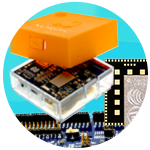
Shop our wide range of cellular IoT development products, including development kits, reference design kits, solution kits, and chipsets.
Test Your KnowledgeBack to Top
Are you ready to demonstrate your Cellular IoT Essentials knowledge? Then take this 15-question quiz.
To earn the the Essentials of Cellular IoT Badge, read through the module attain 100% in the quiz at the bottom, leave us some feedback in the comments section, and give the module a star rating.




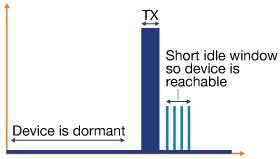
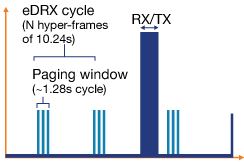

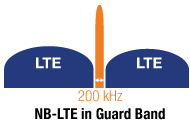
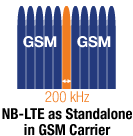



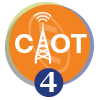

Top Comments